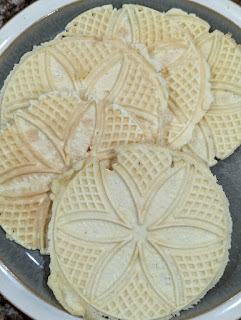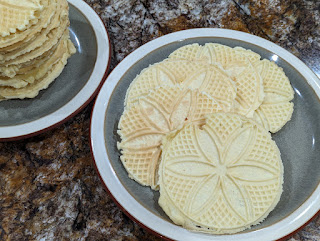An invasion threat looms over the United States. The threat is not the one that right wing politicians and their media mouthpieces have been fomenting at the border with Mexico. Instead, it is one that scientists and others have been warning about at the border with Canada. It is not an invasion of people and their families trying to seek a better, safer life. It is an invasion of pigs seeking out more to eat.
And it is not just any pigs, but super pigs. Pigs that had been cross-bred with wild boars. Canadian farmers introduced the cross-bred pigs in the 1980s. They sought to make a sturdier pig that could do better in Canadian winters. When the market price plunged for boar and pig meat in the early 2000s, the farmers began to release the pigs into the wild. The farmers thought the pigs would not survive the Canadian winters, which is a crazy thought given the whole purpose was to breed a pig who could survive the snow and cold temperatures. And, in fact, the pigs did survive and thrive.
Now, there are super pigs roaming the Canadian prairie. Lots of furry animals that can reach weights of more than 500 pounds. (That is more than twice the size of feral pigs currently found in the United States.) Large animals that are highly intelligent and that have an appetite that includes just about everything. The menu includes not only domesticated crops, which they root up and destroy, but other animals ranging from small mice to even whitetail deer, as well as everything in between. And, if all of that was not enough to set off alarms, these large, furry omnivores also reproduce at a high rate. It is estimated that, even if 65% of the pigs were killed on a yearly basis, they could still see their population increase. Wherever these super pigs go, they are sure to alter the local ecosystem in negative ways.
Up to now, the pigs have been roaming (and ravaging) the Canadian countryside in Alberta, Manitoba and Saskatchewan. However, scientists and government officials now believe that the range of the super pigs will extend to the northern United States. They expect the super pigs to cross into Minnesota, Montana, and North Dakota. Those areas have the ideal habitat for the pigs, which is a mix of wetlands, decidious forests and cropland.
So, I figured that we could greet the pigs with some of my favorite pork recipes that I have made over the years. My favorite recipe is the following one from the Yucatan peninsula.
MY FAVORITE PORK RECIPE (AS OF RIGHT NOW):
COCHINITA PIBIL
Recipe adapted from Glebe Kitchen
Serves several
Ingredients (for the marinade):
- 8 cloves unpeeled garlic
- juice of 2 medium oranges
- juice of 2 large limes
- 3 ounces achiote paste
- 2 teaspoons salt
- 1/4 cup white vinegar
Ingredients (for the pork):
- 4 pounds of boneless pork shoulder
- chunks of oak wood (for the smoker)
- Banana leaves (or parchment paper)
- Foil pan
Ingredients (for the pickled onions):
- 2 red onions, sliced about 1/8 inch thick
- 2 cloves garlic, cut in half
- 1 1/4 cups apple cider vinegar
- 1 1/4 cup water
- 1 clove
- 5 allspice berries, whole
- 1/4 teaspoon black peppercorns
- 3 tablespoons sugar
- 1 teaspoon salt
- Corn tortillas
- Pico de gallo
Directions:
1. Prepare the pork. Roast the garlic in their skins. Use a small cast iron frying pan over medium heat and toast them until they blacken slightly and soften. This takes about 3-5 minutes. Peel the garlic. Combine the peeled, softened garlic with the lime and orange juice, achiote paste, and salt in a blender and blend thoroughly. Check to ensure that the achiote paste is broken up. Add the marinade to the pork and ensure that all sides of the meat are covered by the marinade. Marinate for two to four hours.
2. Prepare the smoker. Prepare the smoker to reach a temperature of about 275 degrees to 300 degrees. Soak the chunks of oak wood for about 1 hour in water.
3. Prepare the pickled onions. Combine all of the ingredients except the onions in a pot and bring that pot to a boil. Add the onions and boil for one minute. Remove from the heat and let cool, stirring occasionally. Store in a sealed jar in the refrigerator. Let the onions rest for at least 4 hours before using.
4. Prepare the pork for the smoker. Typically, the pork is wrapped in banana leaves; however, I did not have access to those leaves. However, I used four pieces of parchment. Scrunch one piece of parchment to form a receptacle for the pork along with the marinade. (The goal is for the pork to be steamed with the marinade while it is smoked.) Take a second piece and cover the pork wrapping it around the pork. Place the pork in an aluminum pan. Place the pan in the smoker and smoke for about 3 to 4 hours or until the pork reaches 190 or 195 degrees Fahrenheit.
5. Continue to prepare the pork. After removing the pork from the smoker, let it rest for 20 minutes. Remove the pork from the parchment packets but keep the marinade and juices. Use a fat separator to separate the fat. shred the pork with two forks and then mix the juice back into the meat.
6. Finish the dish. Serve with corn tortillas, pico de gallo and the pickled onions.
OTHER GREAT RECIPES TO TRY
If you are looking for other ways to cull an invading population of super pigs, I would suggest the following recipes:



.jpg)


.JPG)





